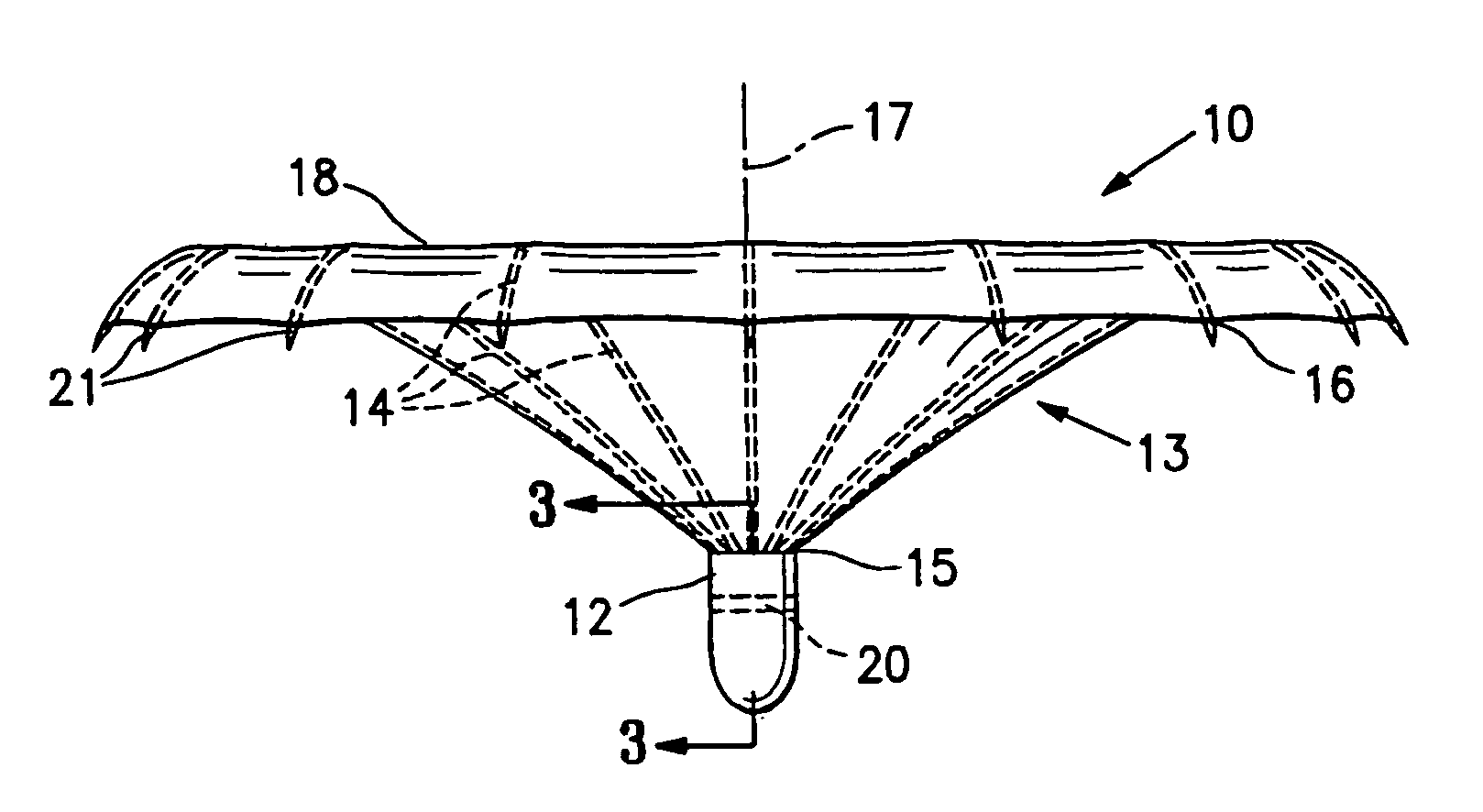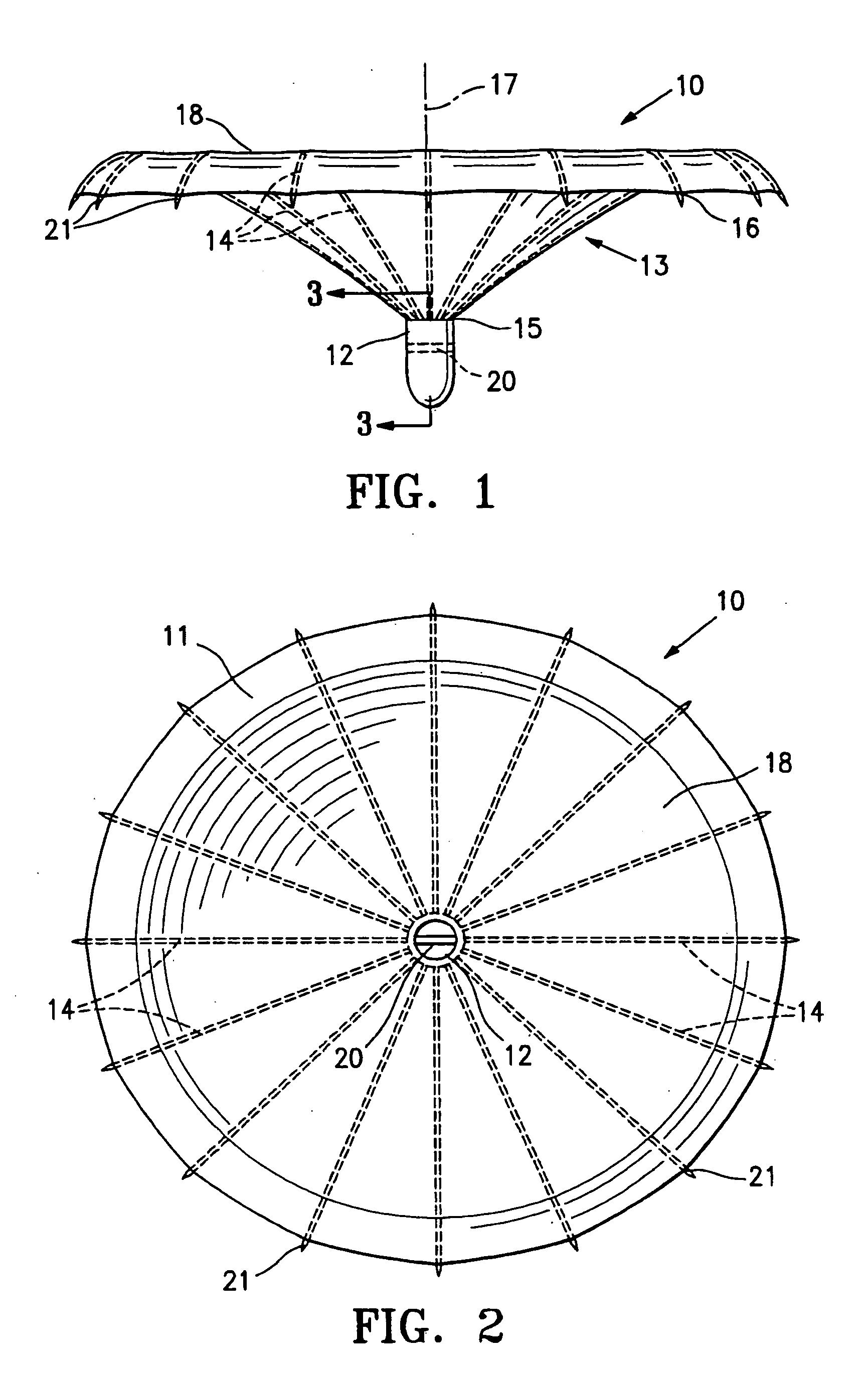Ventricular partitioning device
a ventricular partitioning and ventricular valve technology, applied in the field of congestive heart failure treatment, can solve the problems of enlargement of the heart, insufficient supply of blood to the body, and inability to efficiently pump blood forward with each heart beat, so as to reduce the total volume of the heart chamber, improve the ejection fraction thereof, and reduce the stress applied to the heart.
- Summary
- Abstract
- Description
- Claims
- Application Information
AI Technical Summary
Benefits of technology
Problems solved by technology
Method used
Image
Examples
Embodiment Construction
[0029]FIGS. 1-4 illustrate a partitioning component 10 which embodies features of the invention and which includes a partitioning membrane 11, a hub 12, preferably centrally located on the partitioning device, and a radially expandable reinforcing frame 13 formed of a plurality of ribs 14. Preferably, the partitioning membrane 11 is secured to the proximal or pressure side of the frame 13 as shown in FIG. 1. The ribs 14 have distal ends 15 which are secured to the hub 12 and free proximal ends 16 which are configured to curve or flare away from a center line axis 17. Radial expansion of the free proximal ends 16 unfurls the membrane 11 secured to the frame 13 so that the membrane presents a relatively smooth, pressure receiving surface 18 which defines in part the productive portion of the patient's partitioned heart chamber.
[0030] As shown in more detail in FIGS. 3 and 4, the distal ends 15 of the ribs 14 are secured within the hub 12 and a transversely disposed connector bar 20 i...
PUM
 Login to View More
Login to View More Abstract
Description
Claims
Application Information
 Login to View More
Login to View More - R&D
- Intellectual Property
- Life Sciences
- Materials
- Tech Scout
- Unparalleled Data Quality
- Higher Quality Content
- 60% Fewer Hallucinations
Browse by: Latest US Patents, China's latest patents, Technical Efficacy Thesaurus, Application Domain, Technology Topic, Popular Technical Reports.
© 2025 PatSnap. All rights reserved.Legal|Privacy policy|Modern Slavery Act Transparency Statement|Sitemap|About US| Contact US: help@patsnap.com



